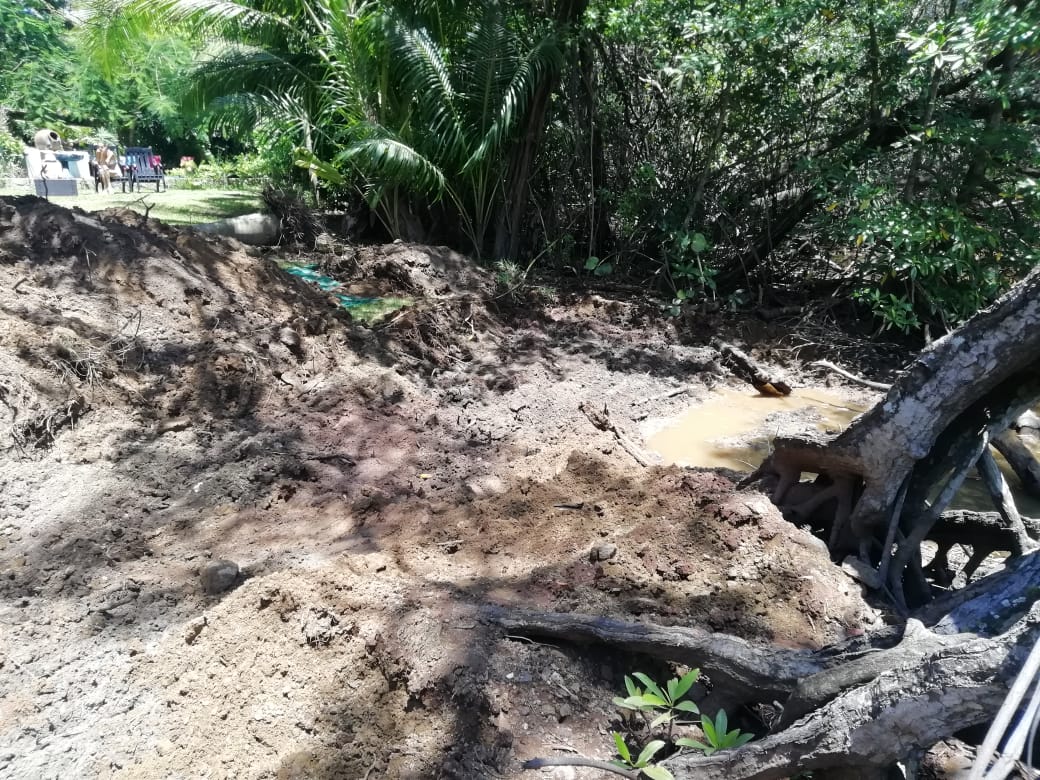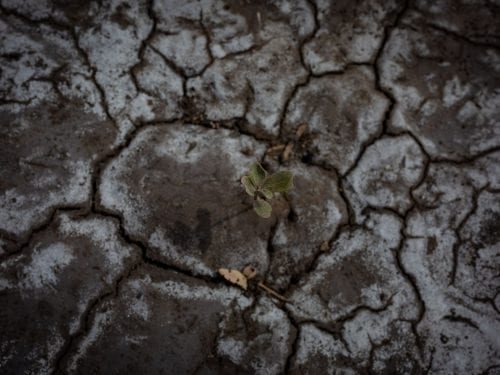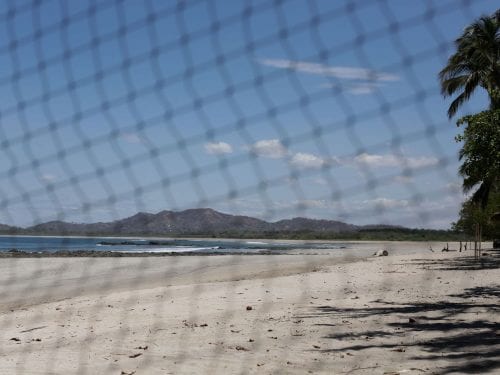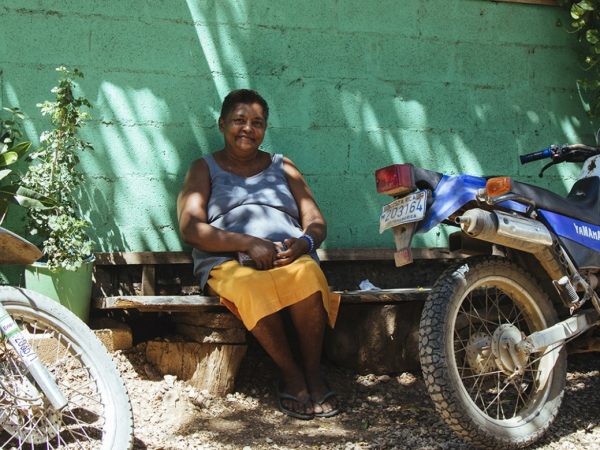
The Environmental Prosecutor’s Office is investigating the hotelier Shon Kapeta for filling 63 square meters of mangrove swamp in the Tamarindo district, in Santa Cruz, and digging a ditch to drain the water into the sea.
The violations investigated by the Prosecutor’s Office lay in Article 98 of the Wildlife Conservation Law and in Article 226 of the Penal Code.
Kapeta poured sand with the aim of minimizing the odor and sewage contamination that reaches from the community to the mangrove swamp, located next to his restaurant and hotel called Ocho. This was reported to La Voz de Guanacaste when some neighbors published on social media about the landfill, which happened on the night of Wednesday, April 22, 2020.
At the request of the Prosecutor’s Office, the director of the Tempisque Conservation Area (ACT), Mauricio Méndez, visited the site on Monday, April 27 and confirmed what had happened.
“We found a part of the landfill and while we were there we talked to the mangrove neighbor [Shon Kapeta] and we told him that obviously he cannot do it, that it is a crime and it is illegal. He asked what he could do and what if we gave him permission to take it out. We called the prosecutor and he said yes,” said Méndez.
Kapeta withdrew the material on June 11, as ordered by the Prosecutor’s Office, “in a restorative precautionary measure.”
“We take everything out and leave it as it was before. It was a few, like eight or ten small carts of red sand,” Kapeta assured La Voz de Guanacaste. According to the information that the Prosecutor’s Office has, it was 19 cubic meters of material.
The ACT director and the environmental prosecutor visited the mangrove swamp on the day of extraction to supervise the work.
The investigation of the Prosecutor’s Office against Kapeta continues in the stage of gathering and analyzing evidence, as confirmed by the press department of the Public Ministry.
Old damages
The coordinator of the Ecological Blue Flag, Jordi Villagrasa, was the first to denounce the businessman’s filling in April. He assured that he was present the day the material was removed and insists that, despite the damage, the mangrove looks similar to before.
“We, as a general Blue Flag policy, are not interested in penalizing, but in raising awareness and for people to correct their mistakes. The community accumulates frustration because it does not feel that public institutions are interested in protecting the environment. Perhaps the official who arrives may be, yes, but the superior, no,” he said.
According to Méndez, from the ACT, the perception that the mangrove forest looks the same is due to the fact that “probably” the mangrove forest itself had previous fillings and damage due to the urban growth of Tamarindo.
The mangrove is a mess but it is not only attributable [to Kapeta]. Street water arrives with sediment, contaminated water and, unfortunately, the mangroves in the cities are very affected”, he added.
Méndez explained that the cairns (to define the limits of the terrestrial-maritime zone) are no longer even, and that shows the invasion that the ecosystem has had. “We have to replace them and we are going to do several things to make sure that the public area is clean and the part of the mangrove swamp is not filled or, if there is, remove it,” he said.
To achieve this they need the collaboration of a surveyor, who has not been able to come to the area due to the national emergency of COVID-19. “With this pandemic the visit has been complicated.”
Sewage without solution
The sewage problem for which Kapeta dumped earth into the mangrove is a stone in the shoe for the entire community. In 2007, the beach lost the Ecological Blue Flag award, which accredited it as a suitable place for recreation.
It lost all scores in wastewater management, in environmental education programs, and in safety. It obtained 17 out of 35 possible points in the quality of sea water.
Thirteen years later, Tamarindo still has not recovered the award. According to the National Water Laboratory, sea pollution exceeded the maximum allowed for fecal coliforms (which is 240 per 100 milliliters of water) on at least five occasions in the last five years.
Fecal coliforms are bacteria that are present in large amounts in feces. Its presence in water or food is a sign of fecal contamination, a risk factor for contracting disease.







Comments